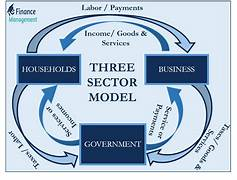"Adaptive Reuse: Breathing New L"ife into Old Buildings
What is Adaptive Reuse?
Adaptive reuse refers to the process of repurposing old or abandoned buildings for new uses, instead of tearing them down. In developing nations, this trend is especially significant, where historic structures, often in disrepair, are given a second life as vibrant community spaces, modern offices, or cultural centers.
This practice goes beyond simply preserving architecture; it's about sustainability, economic development, and cultural conservation. By reimagining existing buildings, communities are able to maintain a connection to their history while adapting to contemporary needs.
Why Adaptive Reuse Matters for Developing Countries
1.Preserving Cultural Heritage:
Developing countries often have rich histories, reflected in their architecture. By opting for adaptive reuse, governments and developers can preserve these cultural landmarks, ensuring future generations retain a sense of identity and connection to their past.
2.Sustainability:
Construction in developing nations can be resource-intensive. Adaptive reuse minimizes the environmental impact by reducing the need for raw materials and avoiding the waste generated by demolition. The energy saved by repurposing a building rather than constructing a new one can be significant, contributing to a greener, more sustainable urban future.
3.Economic Growth:
Repurposing older buildings can be more cost-effective than new construction. The process of adaptive reuse can stimulate local economies, providing job opportunities in construction, design, and real estate development. Additionally, repurposed spaces can attract tourism, businesses, and investors who value the unique blend of history and modernity.
4.Innovation and Creativity:
Adaptive reuse allows architects and urban planners to think outside the box, merging the old with the new in creative ways. This innovative approach often results in spaces that are unique and aesthetically pleasing, with a story to tell. In developing countries, where resources may be limited, this creativity can lead to smart, low-cost solutions that enhance urban landscapes.
Examples of Adaptive Reuse in Developing Nations
1.The Warehouse Revamp in Addis Ababa, Ethiopia
In Ethiopia’s capital, old industrial warehouses have been transformed into art galleries, co-working spaces, and even start-up hubs. These repurposed spaces not only preserve the city’s industrial heritage but also foster innovation and collaboration in the growing tech sector.
2.The Galle Fort in Sri Lanka
Galle Fort, a UNESCO World Heritage Site, is a prime example of adaptive reuse. This ancient Dutch fortress has been repurposed into a thriving community of boutique hotels, cafes, and galleries, all while retaining its historic charm and integrity. It has become a symbol of how preserving the past can be economically viable and beneficial for tourism.
3.Mexico City's Post Office Palace
Once a bustling postal hub, this iconic building has been revitalized as a museum and cultural space. It showcases Mexico's architectural past while serving a modern function that continues to engage the community and tourists alike.
Challenges to Adaptive Reuse in Developing Countries
Despite its many advantages, adaptive reuse comes with its own set of challenges in developing countries:
1.Financial Constraints:
Restoring older buildings can be expensive, especially when they have deteriorated significantly. Governments and developers may lack the funds or incentives to invest in these projects, opting for cheaper, new construction instead.
2.Lack of Expertise:
In some regions, the skills required for restoring heritage buildings might not be readily available. Specialized knowledge is often needed to maintain the structural integrity and historical accuracy of older buildings, and this expertise can be hard to come by.
3.Regulatory Hurdles:
Zoning laws and building codes may not always support adaptive reuse. In some cases, outdated or overly strict regulations can hinder the development of projects that could otherwise benefit communities and economies.
Looking Ahead: Adaptive Reuse as a Model for Sustainable Development
As more developing nations recognize the value of adaptive reuse, this practice could become a model for sustainable urban development. By blending history with modern needs, adaptive reuse allows countries to grow without sacrificing their heritage. It also offers a way to tackle urban challenges like overcrowding and resource depletion while fostering a sense of community pride.In conclusion, adaptive reuse is more than a trend; it's a way to balance progress with preservation, sustainability with growth. For developing countries, embracing this practice could lead to more resilient, culturally rich, and economically vibrant cities. As the world looks toward a future of sustainable development, adaptive reuse will play a pivotal role in shaping how we live, work, and connect with our past.








![Terry Farrell [ British architect]](https://blogger.googleusercontent.com/img/b/R29vZ2xl/AVvXsEgF5Bc7-F6oyGHwVlcJfUVoN9PAph8ZIAQAVTMDZ0oOX0kIENEGN84Arj8wxKS666_yV2hRHMM4zlJ5gCJFBA1ttvrGBPrCNY0tZWfcuPl0aolt_szKpBjWtbLYutI4ivHBLrzZkj-wEk_l_1paoEEVkgnzCt7yvpHoDkhm63TxHxL45GUgV2OZVkwLYkWG/w100/11e81b6d-862f-4a23-a2d0-950d22063de0.png)



0 Comments